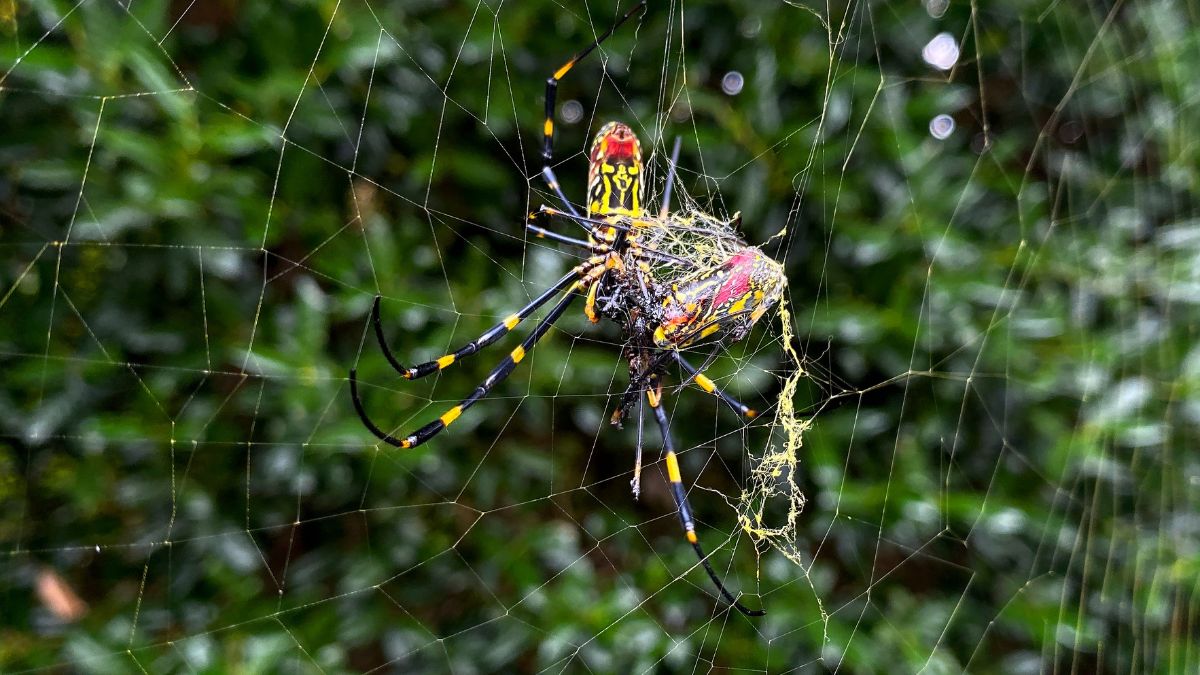US’ bustling metropolitan city of New York is no stranger to challenges, but the latest threat looming over the Big Apple is sending shivers down the spines of its residents: giant, venomous flying spiders.
Andy Davis, a University of Georgia researcher, earlier warned in The New York Times report that these eight-legged creatures, known as Joro spiders, who are migrating from southern regions, will potentially descend upon New York City and neighbouring states somewhere around this summer, in short, any day now.
But why have these airborne arachnids set their sights on New York and exactly how dangerous will their arrival be? We explain
What are Joro spiders?
Joro spiders, scientifically known as Trichonephila clavata, are a species of orb-weaving spiders that are indigenous to Asia.
Identified by their distinctive bright yellow and black markings, the female spiders can grow up to eight inches long, while the males, brown and smaller, are roughly half that size. José R. Ramírez-Garofalo, an ecologist at Rutgers University told The New York Times, that the spiders are about the size of a post-it note or a stretched-out human hand.
What makes them different that other spider species, is their remarkable ability to glide through the air using silk threads, earning them the moniker “flying spiders”.
As per New Jersey Pest Control, the spiders use a technique called “ballooning,” which involves them releasing silk threads into the air, allowing them to be carried by the wind and move to new areas. Using the method they can surprisingly travel more than 160 km.
How did they come to the US?
According to New Jersey Pest Control, Joro spiders, originating from Asian countries of Japan, China, Taiwan, and South Korea, made their unexpected appearance in the United States after they likely hitched a ride via cargo shipments and found their way to north Georgia around 2010. Since then, they have rapidly adapted to diverse environments, establishing themselves as a notable presence in the Southeast.
Impact Shorts
More ShortsAs reported by the nonprofit group INaturalis, Joro spiders have popped up in various southern states, including Maryland, West Virginia, Tennessee, North Carolina, and South Carolina, and even Oklahoma.
In a study published in November, researchers from Clemson University warned of the spiders’ potential spread, forecasting their movement towards “the Great Lakes region of the US and Canada, extending throughout the midwestern and northeastern US, as well as eastern Canada”.
Furthermore, parts of the Northwest regions of US and Mexico may also become suitable habitats for these venomous arachnids, according to the scientists’ projections.
But why New York?
According to Davis, New York happens to be “right in the middle of where they like to be.” The Mid-Atlantic region’s latitude aligns closely with that of East Asian countries where Joro spiders are widespread, offering them a similar climate.
Davis pointed out that the spiders don’t face any significant challenges adapting to life in New York. He even spotted a few on-street lamps and telephone poles. “They seem to be OK with living in a city,” he said, indicating their ability to thrive in urban environments.
Davis and his colleagues found in a research in 2022, that Joro spiders have a high metabolism and heart rate, which allows them to survive in colder climates.
Earlier this year, Ecologist Jose emphasised to the Staten Island Advance that “it is a matter of when, (and) not if” the spiders make their way to New York and New Jersey.
**Are they dangerous?
**
Keeping their creepiness aside, Davis found in their study that Joro spiders are not harmful to people or pets. In fact, that study found that Joro spiders may be the shyest spider ever documented.
They are venomous, but it is reserved for the critters that get caught up in their webs, including butterflies, wasps, and cockroaches. Their bite, similar to a bee sting, is not lethal to humans, as their fangs are too small to penetrate human skin.
As with any invasive species, scientists are concerned about the potential impact of Joro spiders on local crops and trees. However, their behavior and effects on agricultural environments remain a subject of study.
With input from agencies


)

)
)
)
)
)
)
)
)



